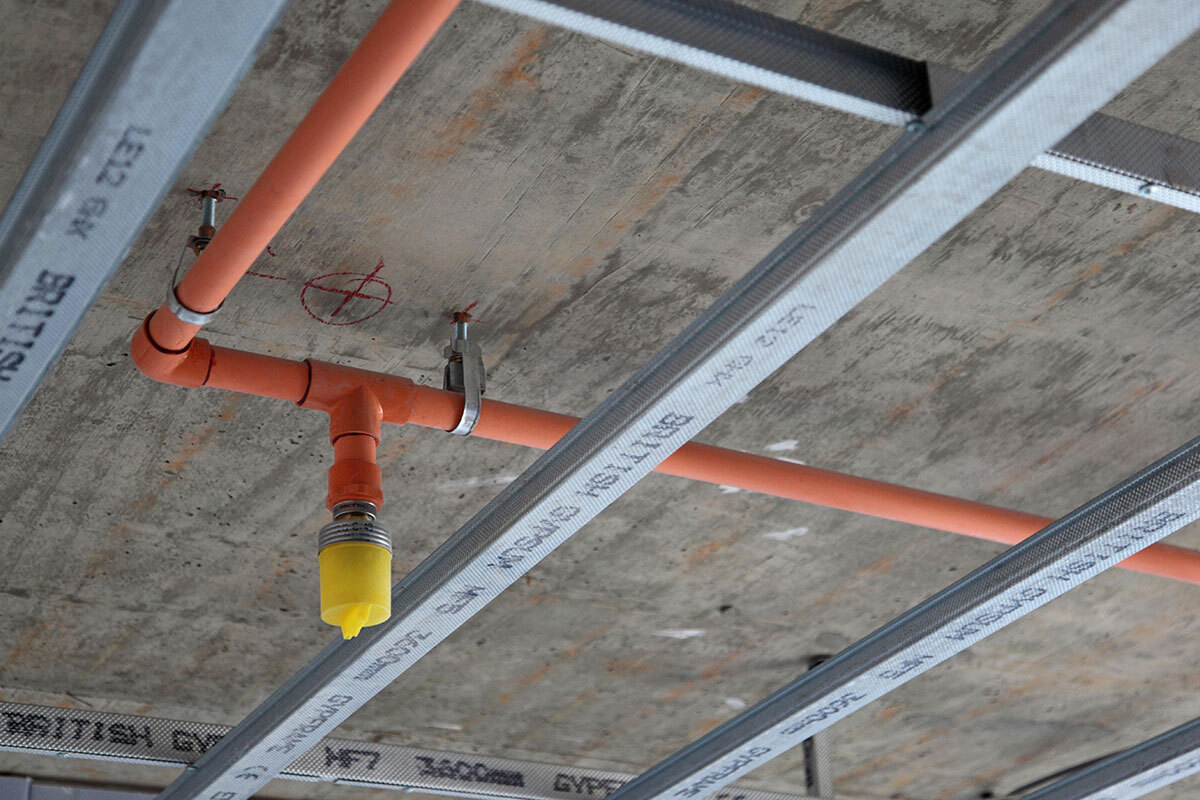You are viewing 1 of your 1 free articles
NFCC restates concern over lack of requirement to retrofit residential buildings with sprinklers
The National Fire Chiefs Council (NFCC) has reiterated its concern over the lack of a requirement to retrofit existing residential buildings with sprinklers.
In a policy update, it called on the government for “greater inclusion” of automatic water suppression systems (AWSS) in the built environment, including schools, student accommodation and care homes, irrespective of building height.
Specifically, it recommends that there should be a requirement for sprinklers to be installed in all new care homes, irrespective of height, and that sprinklers be retrofitted in all high-rise residential buildings over 18 metres tall that are served by a single staircase.
This also applies to those buildings that are over 11 metres in height on a “risk-assessed basis”.
Research by Inside Housing last year revealed that only 18.9% of high-rise social housing blocks have been fitted with sprinklers and only 12% with fire alarms, six years on from the Grenfell Tower fire.
In response to the research, the NFCC called on the government to make it mandatory to retrofit sprinklers in high rises, while the Royal Institute of British Architects called the data “shocking”.
The NFCC previously highlighted the “crucial role” sprinklers play in the event of a fire, with research showing that they are 99% effective in extinguishing or controlling a fire and 94% reliable in their ability to operate across all building types.
It said: “Sprinklers save lives and reduce injuries. They have been used for over 100 years and are consistently reliable, protect property, reduce the cost of repairs, and minimise the impact of fire on the environment.
“Sprinklers can also buy crucial additional time in firefighting operations, which may mean that evacuations are not necessary in the first place.”
The NFCC said England’s current regulations on sprinkler requirements “trail behind its neighbours” Wales and Scotland.
It is calling on the government to “emulate the policies in the devolved governments to support unitary policy across nations by lowering or removing the acceptable height, floor area, or occupancy threshold dependent on building type”.
In particular, the NFCC said installation and retrofitting of sprinklers were most needed in care homes, residential buildings, schools, car parks, storage and warehouses, and hospitals.
Jonathan Dyson, NFCC lead for sprinklers and AWSS, said: “Sprinklers have been used for over a century and are consistently reliable at saving lives and reducing injuries.
“Analysis shows they’re 99% effective in extinguishing or controlling a fire. Sprinklers can buy crucial additional time for firefighting and can also protect property, reduce repair costs, and minimise the environmental impacts of fire.
“[The] NFCC welcomed the lower height threshold for sprinkler installation in new residential buildings to 11 metres, but we remain concerned that there’s still no requirement to retrofit existing residential buildings with sprinklers.
“We’ve consistently urged the government to make it a requirement to retrofit all existing residential buildings over 11 metres on a risk-assessed basis.”
A Department for Levelling Up, Housing and Communities spokesperson said: “Safety is our absolute priority - which is why we’re undertaking a major review of the fire safety guidance in building regulations – including in specialised housing and care homes. We will respond in due course.”
Sign up for our fire safety newsletter
Already have an account? Click here to manage your newsletters












